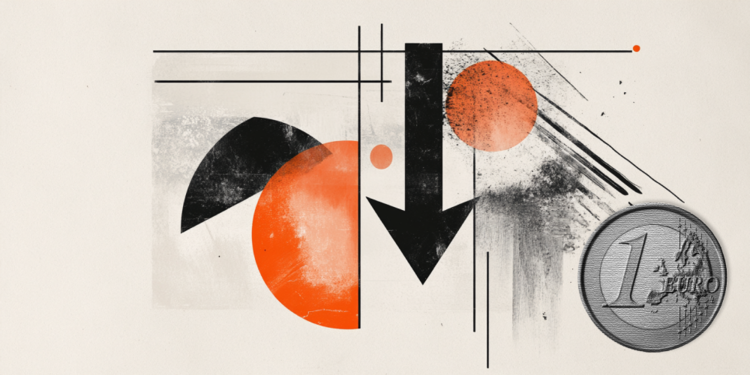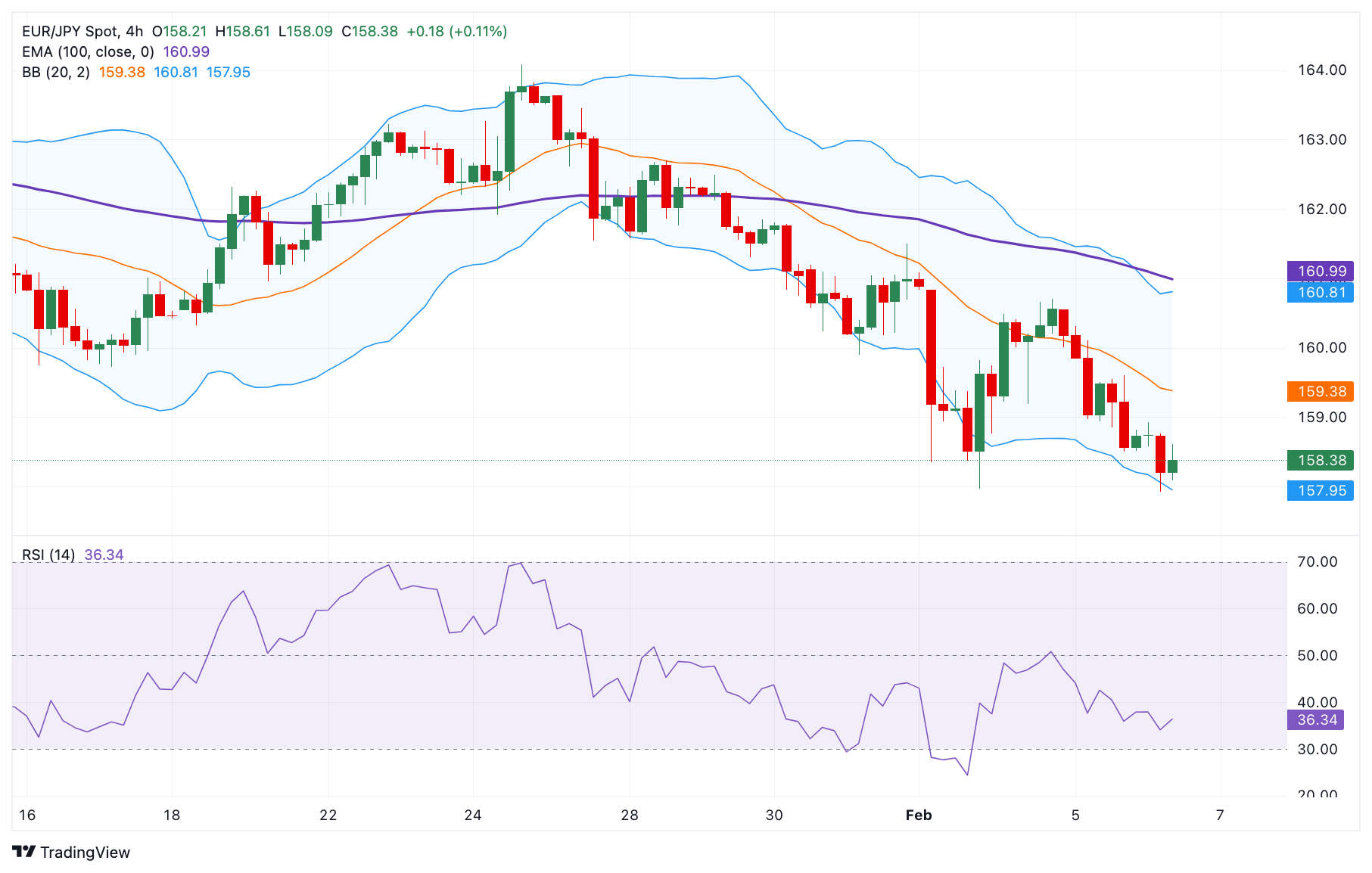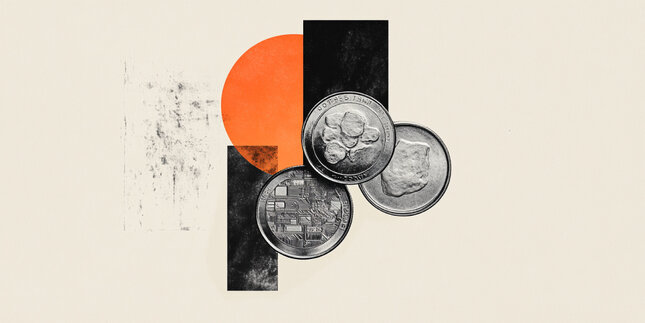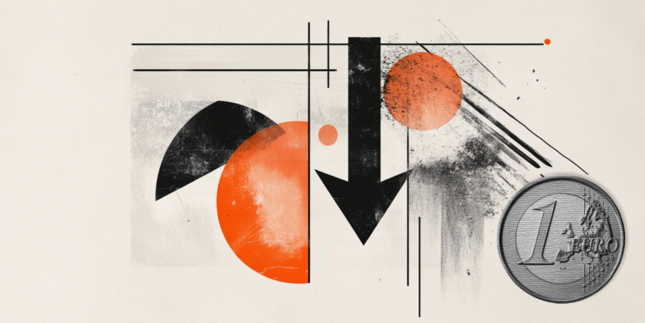-
Opps!
This language contents are not available!

EUR/JPY Price Forecast: Path of least resistance level is to the downside below 158.50
- EUR/JPY edges lower to 158.45 in Thursday’s early European session, losing 0.27% on the day.
- The negative view of the cross remains intact below the 100-period EMA with a bearish RSI indicator.
- The first downside target to watch is 158.00; the key upside barrier emerges at 160.00.
The EUR/JPY cross extends its decline to around 158.45 during the early European session on Thursday. Recent hawkish remarks from some Bank of Japan (BoJ) officials bolstered the odds of a Japanese interest rate hike in March, supporting the Japanese Yen (JPY). BoJ Board Member, Tamura Naoki, said on Thursday that the central bank must raise interest rates to at least 1% by the second half of the fiscal year beginning in April.
According to the 4-hour chart, EUR/JPY remains capped under the key 100-period Exponential Moving Averages (EMA), suggesting that the path of least resistance is to the downside. The downward momentum is reinforced by the Relative Strength Index (RSI), which stands below the midline near 38.00, supporting the sellers in the near term.
The lower limit of the Bollinger Band and round mark at 158.00 act as an initial support level for the cross. A breach of this level could see a drop to 156.18, the low of December 3, 2024. Further south, the next contention level to watch is 155.15, the low of September 16, 2024.
On the other hand, the crucial resistance level emerges at the 160.00 psychological level. The additional upside filter to watch is 160.80, the upper boundary of the Bollinger Band, en route to 161.00, the 100-period EMA.
EUR/JPY 4-hour chart
Japanese Yen FAQs
The Japanese Yen (JPY) is one of the world’s most traded currencies. Its value is broadly determined by the performance of the Japanese economy, but more specifically by the Bank of Japan’s policy, the differential between Japanese and US bond yields, or risk sentiment among traders, among other factors.
One of the Bank of Japan’s mandates is currency control, so its moves are key for the Yen. The BoJ has directly intervened in currency markets sometimes, generally to lower the value of the Yen, although it refrains from doing it often due to political concerns of its main trading partners. The BoJ ultra-loose monetary policy between 2013 and 2024 caused the Yen to depreciate against its main currency peers due to an increasing policy divergence between the Bank of Japan and other main central banks. More recently, the gradually unwinding of this ultra-loose policy has given some support to the Yen.
Over the last decade, the BoJ’s stance of sticking to ultra-loose monetary policy has led to a widening policy divergence with other central banks, particularly with the US Federal Reserve. This supported a widening of the differential between the 10-year US and Japanese bonds, which favored the US Dollar against the Japanese Yen. The BoJ decision in 2024 to gradually abandon the ultra-loose policy, coupled with interest-rate cuts in other major central banks, is narrowing this differential.
The Japanese Yen is often seen as a safe-haven investment. This means that in times of market stress, investors are more likely to put their money in the Japanese currency due to its supposed reliability and stability. Turbulent times are likely to strengthen the Yen’s value against other currencies seen as more risky to invest in.
Forex News
Keep up with the financial markets, know what's happening and what is affecting the markets with our latest market updates. Analyze market movers, trends and build your trading strategies accordingly.





















